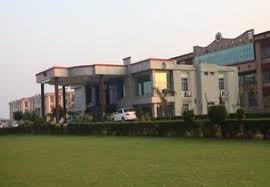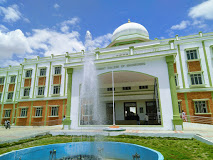
The Vice President of India, Shri M. Venkaiah Naidu has asked the medical fraternity to take lead and launch an awareness campaign on the need to prevent non-communicable diseases like diabetes, hypertension and cancer, which are assuming disturbing proportions.
Daily Current Affairs Quiz 2019
He wanted both private and public hospitals as well as individual doctors to visit nearby schools, colleges and community centres in their localities regularly and educate the youngsters on the health hazards posed by modern lifestyles and the need to undertake regular physical activity and adopt healthy dietary habits.
Inaugurating the 27th Annual Conference of the Indian Academy of Neurology – IANCON 2019, in Hyderabad today, Shri Naidu said the country was facing the twin burden of some communicable diseases and NCDs, apart from glaring absence of adequate modern medical facilities in rural areas.
The Vice President also advised the governments and policy makers to give more incentives for setting up medical institutions in rural areas. The Central Governments and the States must provide a helping hand to private sector without compromising on standards. He also wanted the Medical Council of India to address the issue of increasing seats in neurology, while ensuring that the colleges strictly adhere to regulations.
Referring to neurological disorders, he said that India has a huge burden affecting all strata of society, both in rural and urban areas.
Expressing concern that every year at least 2 million people in India suffer from brain stroke resulting in long-term disability, including paralysis and other problems, the Vice President said there was an urgent need to educate the public to control their blood pressure, blood sugar levels and adopt a healthy lifestyle apart from providing treatment.
Stating that the rise in acquired neurological diseases (non-communicable) was a worrisome development, he opined that changing lifestyle and dietary habits were adding to the trend. “Over the last two decades, the burden of non-communicable diseases like stroke, epilepsy, headaches, and spine and brain disorders in India has increased more rapidly than communicable diseases like infections and fever. 55.2% of all deaths in India in 2016 were due to non-communicable diseases, according to a study” he added.
Shri Naidu said that the burden of the neurological disease must be tackled by adopting a multi-pronged approach including augmenting seats in neurology and establishing more and more hospitals in the rural areas equipped with CT and MRI scans for early diagnosis of neurological disorders.
He also called for providing rehabilitation services in the rural areas along with training the family members in the rehabilitation process, so that they can take care of the disabled persons.
Observing that the health sector in India was facing the problems of inadequate public spend, low doctor-patient ratio, high share of out-of-pocket expenditure, inadequate infrastructure in rural areas including lack of penetration of health insurance and inadequate preventive mechanisms, the Vice President opined that it was crucial to address this huge gap in the supply of trained healthcare practitioners by opening more medical colleges and increasing the number of seats at both graduate and postgraduate levels.
To mitigate this crisis, we need to pay much more attention to Primary Healthcare, which is the first point of contact with any patient with the medical system.
More than 2000 delegates, including 15 international experts from the USA, UK, Australia, Austria, Portugal, Japan, and Italy attended the conference.
The Member of NITI Aayog, Dr. Vinod Paul, the MD & CEO, KIMS Hospitals, Hyderabad, Dr. B. Bhaskar Rao, the President, Indian Academy of Neurology, Dr. Satish Khadilkar, the President, World Federation of Neurology, Dr. William Carroll, the Secretary, Indian Academy of Neurology, Dr. Gagandeep Singh, the Chairman, Organising Committee, Dr. S. Mohandas, the Organising Secretary, Dr. Sita Jayalakshmi and other dignitaries were present on the occasion.
Following is the text of Vice President’s address:
“I am pleased to inaugurate the 27th annual meeting of the Indian Academy of Neurology—IANCON 2019 and address all of you. Although I am not an expert on the subject like most of the delegates gathered here, I had accepted the invitation to share a few of my thoughts and to get an understanding of the latest developments in your specialty.
I am told that more than 2000 delegates, including 15 international experts from USA, UK, Australia, Austria, Portugal, Japan and Italy are attending this conference. I wish you all a pleasant and fruitful stay in this beautiful and historic pearl city of Hyderabad.
I am happy to know that the Indian Academy of Neurology promotes research, education and interaction among experts, practitioners and students of neurology about various neurological disorders. Holding such annual meetings and scientific deliberations are essential to update knowledge and keep abreast of the latest advances.
Various programmes implemented by successive governments over the past many decades have enabled steady improvement in the health indicators from improving longevity to eradicating polio and largely controlling other communicable diseases. However, the major concern today is the rapid rise of non-communicable diseases.
In fact, the country is facing the twin burden of some communicable diseases and NCDs, apart from glaring absence of adequate modern medical facilities in the rural areas, particularly in the remote parts of the country. This is an area that needs to be addressed on a war footing by all the stakeholders in the healthcare industry, including the private sector.
As regards neurological disorders are concerned, I am informed that India has a huge burden affecting all strata of society, both in rural and urban areas. This is because of a combination of age-related diseases due to increased longevity and the problems of infections attacking the brain.
Although neurological disorders deal with all problems arising from dysfunction of brain , spinal cord, muscles and nerves, the most common among these are Brain stroke, Dementia, Epilepsy, Head Injuries and infections of brain.
It is estimated that every year at least 2 million people in India suffer from brain stroke resulting in long-term disability, including paralysis and other problems. While the government is doing its best to provide effective treatment, the key to stroke management lies in prevention by educating public to control their blood pressure, blood sugar levels and adopt a healthy life style.
While the estimated prevalence of serious neurological disorders like brain stroke, epilepsy, dementia is 5 to 8 per 1000 people in developed countries, the prevalence in India is nearly “double” at 14 to 17 per 1000 people.
Although diseases of brain due to community acquired infections, maternal malnutrition during pregnancy and lack of oxygen (hypoxia) during child birth are on the decline, I am told that there is rise in acquired neurological diseases (non-communicable). This is a worrisome trend and is probably due to changing lifestyle and dietary habits.
Over the last two decades, burden of non-communicable diseases like stroke, epilepsy, headaches, spine and brain disorders in India has increased more rapidly than communicable diseases like infections and fever. In fact, 55.2% of all deaths in India in 2016 were due to non-communicable diseases.
Brain strokes are one of the leading causes of death and disability in India, alongside heart diseases and lung diseases.
The five leading risk factors for increased disease burden in recent times are child and maternal malnutrition, air pollution, obesity, high blood pressure, and high blood glucose levels. Surprisingly, all of which can be controlled by a healthy and active lifestyle.
It is of immense relevance to health administrators and planners that adequate neurology services have to be provided with requisite workforce and infrastructure both in the urban centres as well as rural population areas, including remote places in the country.
In view of the constraints of limited specialist workforce and finances, there is a need to optimize the available resources through innovative strategies, including the use of telemedicine.
I am told that dementia or loss of memory is the second biggest contributor to neurological burden in India. In view of the expected increase in the proportion of elderly population in our society in future, the number of people with dementia is expected to triple in India by 2050. This challenge needs to be addressed with well-planned strategies for prevention and treatment of dementia.
I am told that epilepsy affects 1% of Indian population. While the public awareness campaigns by neurologists have helped to increase the awareness and reduce the stigma attached to it, the need of the hour is to make accessible the advances in the medical and surgical treatment of epilepsy to the vast majority of our population living in rural areas.
The neurological diseases burden needs to be tackled by adopting a multi-pronged approach. Apart from augmenting the seats in neurology, more and more hospitals in the rural areas need to be equipped with CT and MRI scans for early diagnosis of neurological disorders. There is also a need to provide rehabilitation services in the rural areas.
The lack of adequate rehabilitation services in rural areas can be partly overcome by training the family members in the rehabilitation process, so that they can take care of the disabled persons.
As mentioned earlier, India has achieved significant progress since Independence on various health indicators. With successive governments according high priority to health and the wellbeing of the people, the average life expectancy has increased to 69 years and India’s disease burden due to communicable, maternal, neonatal, and nutritional diseases has dropped from 61 % to 33 % between 1990 and 2016.
There are noteworthy improvements in health indicators relating to infant mortality rate (IMR) and maternal mortality rate (MMR) due to increasing penetration of healthcare services across the country, extensive health campaigns, sanitation drives, increase in the number of government and private hospitals in India.
India launched ‘Ayushman Bharat’, said to be the world’s largest health insurance scheme, under the aegis of which lakhs of people are receiving free treatment.
India’s health sector has a number of competitive advantages, from a large pool of well-trained medical professionals, to a flourishing Pharma industry which excels in generic drug manufacturing, to cost effective and quality medical procedures. The cost of surgery in India is substantially less when compared to the US or Western Europe, which makes India a healthcare destination of choice.
In spite of all these advancements, there is a long and arduous road ahead of us.
Our health sector still grapples with inadequate public spend, low doctor-patient ratio, high share of out-of-pocket expenditure, inadequate infrastructure in rural areas, lack of penetration of health insurance and inadequate preventive mechanisms.
We face a huge shortage in the number of qualified medical practitioners in India, especially specialist doctors. The National Health Profile 2018 says that there is just one allopathic government doctor available for around 11,082 people across the country, a figure more than 10 times of the WHO recommended figure of 1:1000.
It is crucial that we address this huge gap in the supply of trained healthcare practitioners by opening more medical colleges and increasing the number of seats at both graduate and postgraduate levels. Nearly 86% of all the medical visits in India are made by people living in rural areas with the majority required to travel long distances for accessing quality health care facilities. Besides, the out of pocket expenses are driving many into the vicious cycle of debts.
To mitigate this crisis, we need to pay much more attention to Primary Healthcare, which is the first point of contact of any patient with the medical system.
Before concluding, I would like to urge the medical fraternity to play a pro-active role and launch an awareness campaign on the need to prevent non-communicable diseases like diabetes, hypertension, and cancer, which are assuming disturbing proportions. I would like the both private and public hospitals as well as individual doctors to visit nearby schools and colleges in their localities regularly and educate the youngsters on the health hazards posed by modern lifestyles and the need for regular physical activity and healthy dietary habits.





